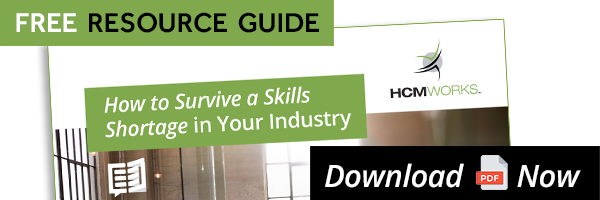Implementing a successful and sustainable contingent workforce management process into your organization is complex and difficult - but what happens when those contingent workers are spread around the globe, rather than being found in your immediate locale?
Being able to build a workforce of global workers is perhaps the biggest benefit of the contingent workforce. It enables your company to utilize foreign workers and tap into specialized remote workers who may not be available in your domestic or immediate location due to a shortage of skilled workers.
Today’s globalized business environment means there’s a vast number of large enterprises making use of contingent workers from every corner of the globe. In fact, this hiring practice is fast becoming the norm.
Deloitte’s 2018 Global Human Capital Trends report, titled ‘The workforce ecosystem: Managing beyond the enterprise’, found there are approximately 77 million formally recognized freelancers in Europe, India, and the United States.
While in the United States, more than 40 percent of workers are now employed in “alternative work arrangements,” such as contingent, part-time, or gig work. This percentage is steadily rising - increasing by 36 percent in the past five years - and now includes workers of all ages and skill levels.
These workers can offer your company a wide range of benefits, from hiring on a project-by-project basis, rapid scalability, access to the best talent in your industry, creating an agile workforce and much more.
Why companies must get it right
Despite this, many organizations are still failing to set up successful contingent workforce management plans. Contingent workforce management is split between departments, creating fragmented processes - and a global workforce is even harder to manage.
This results in inconsistent hiring techniques, hidden costs, wasted administration time and a lack of visibility into workers and how they’re performing.
So, what’s the solution? An organization-wide management process that unifies every aspect of hiring, onboarding and working with non-permanent workers. Want to learn how to manage a global contingent workforce? HCMWorks has listed four best practices to get you started:
1 - Communicate regularly
It may sound obvious, but continual communication and building a relationship with contingent workers in a different country is essential if you want to make them feel like a valued member of your team.
By utilizing either video or voice communications (something like Skype or Google for Business works great), you can ensure that you relay any messages accurately to contingent workers. This allows you to make sure that they are on the same wavelength with you in regards to projects.
2 - Make sure you understand regional regulations
Hiring contractors in foreign countries means it’s critical that your company understands and complies with regional regulations in the countries that you are operating. Being up to speed with the latest legislation will ensure your company doesn’t fall foul of any international hiring practices.
It’s also valuable to learn about the office and business culture in the countries you operate. By doing your homework on a country’s culture you will ensure that you don’t miss any nuances surrounding manners and workplace habits.
This will help build a relationship with your non-permanent workers in foreign countries. You don’t want to lose your pipeline of potentially great contract workers because you came across as rude or uncaring for your workers.
3 - Use a vendor management system (VMS)
Still wondering how you create a centralized process so your organization is entirely on the same wavelength when it comes to contingent workforce management? That’s where a vendor management system (VMS) comes in.
A VMS is a cloud-based system that will act as a central database for every aspect of your company’s contingent management needs. By storing data on your old, present and potential candidates, your company will have clear visibility into its entire contingent workforce.
This data will include everything from contracts, time logs, onboarding, expenses, payments, performance reviews, compliance and much more - giving you the information to make smart, informed hiring decisions that empower your company to grow.
4 - Partner with an expert
No matter how large your organization is, it’s unlikely that you will have an employee who is specialized in the unique demands of contingent workforce management. In fact, managing a global contingent workforce is so complex that it generally takes a large team of highly-skilled individuals to implement.
That’s why your business should consider partnering with a managed services provider (MSP).
Working with a contingent workforce expert, such as HCMWorks, will give you access to a team with specialized knowledge that completely understands the challenges surrounding your contingent workforce - such as classification, pay, talent acquisition and management.
Want to learn more about how our contingent workforce expertise can revolutionise your management processes? Contact our team of experts today, we would be more than happy to discuss any challenges that your company is facing.



